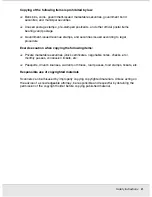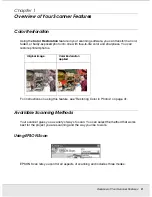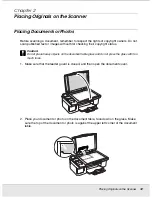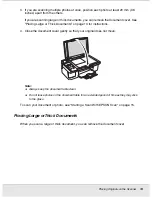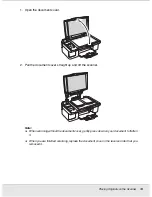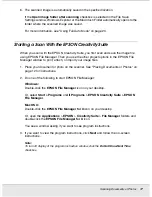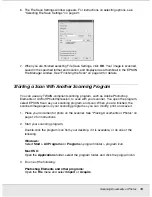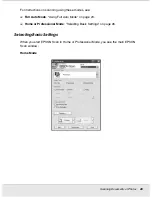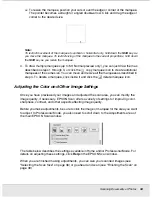
Scanning Documents or Photos
22
SCAN1.FM (A4 size) Rev.C
R4CJ350
User’s Guide
4. The checkboxes at the bottom of the window give you these options:
❏
Overwrite any files with the same name
Select this option if you want to reuse the selected file name and location and
overwrite previous files with the same names.
❏
Show this dialog box before next scan
Select this option if you want the File Save Settings window to appear automatically
before you scan. If you deselect it, you must click the arrow to the right of the
Scan
button and select
File Save Settings
to open the window.
❏
Open image folder after scanning
Select this option if you want EPSON File Manager, Windows Explorer, or the
Macintosh Finder to automatically open the folder where your scanned image is
saved when EPSON Scan finishes scanning.
Format (File
Extension)
Explanation
BITMAP
(*.BMP)
(Windows
only)
A standard image file format for Windows. Most Windows programs,
including word processing programs, can read and prepare images in this
format.
JPEG (*.JPG)
A compressed file format in which the compression level can be selected.
The JPEG format lets you highly compress image data. However, the
higher the compression, the lower the image quality. Any lost image
quality data cannot be restored and the quality deteriorates each time
the data is saved. The TIFF format is recommended when modification
and retouching are required.
Multi-TIFF
(*.TIF)
A TIFF format where multiple pages are saved to the same file. You can
also edit the scanned images before saving them. See EPSON Scan Help
for details. To open Multi-TIFF files, you need a program that supports it.
PDF (*.PDF)
A document format that can be read on both Windows and Macintosh
systems (platform independent). To use PDF documents, you need Adobe
Reader or Acrobat. Multi-page documents can be saved as one PDF file.
When you save color or grayscale images in PDF, you can select a
compression level. You can also edit the scanned images before saving
them. See "Scanning to a PDF File" on page 48 for details.
PICT (*.PCT)
(Macintosh
only)
A standard image file format for Macintosh. Most Macintosh programs,
including word processing programs, can read and prepare images in this
format.
PRINT Image
Matching II
JPEG (*.JPG)
or TIFF (*.TIF)
A file format that includes PRINT Image Matching II data for enhanced
quality and a wider color range. PRINT Image Matching II compatible
printers can then print using this data for brilliant, true-to-life results. (PRINT
Image Matching data does not affect the way the image displays on a
screen.) Available in JPEG or TIFF format.
TIFF (*.TIF)
A file format created for exchanging data between many programs, such
as graphic and DTP software. When scanning black & white images, you
can specify the compression type.

